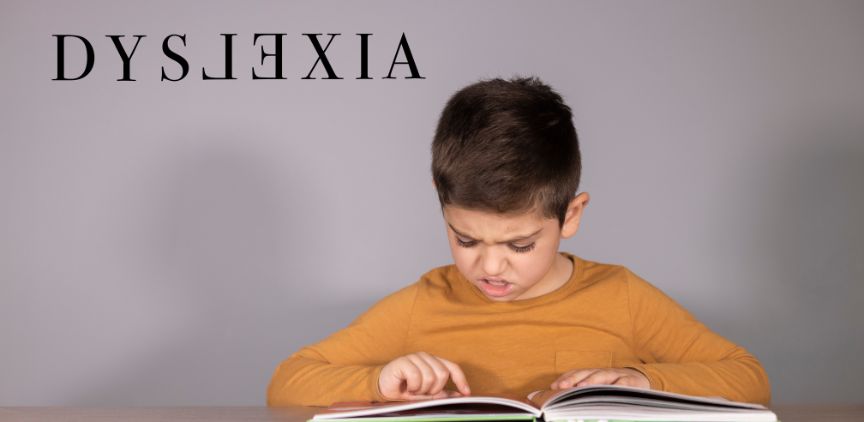Helping Dyslexic Readers and Writers with Effective Tools
Dyslexia is a language-based learning disorder in which people have trouble reading. People with dyslexia can struggle with reading comprehension, reading at a good pace, spelling, and writing. It is estimated that around 5-10% of people experience dyslexia. Dyslexia is not due to a lack of intelligence or willingness to learn. While dyslexia can’t be outgrown, there are a variety of tools that help readers cope with dyslexia and overcome its challenges.
Many students struggle in class due to dyslexia, but these dyslexia tools, which can be implemented by parents and educators, are proven to help students with “dyslexia reading."
These dyslexia learning tools can be used for students or adults alike. Below is a list of five dyslexia learning tools widely used in the classroom and beyond.
Speech-to-Text Technology
Because those with dyslexia often struggle with writing and spelling, speech-to-text technology can be helpful in improving their writing skills. Speech-to-text technology allows users to speak into a microphone (usually within the iPad, computer, or phone) and will convert their spoken word into written text.
Speech-to-text technology is often used in classrooms for dyslexic students, as well as for students with a variety of other learning disabilities. This learning tool alleviates spelling issues and allows writers to focus on content rather than specific words, spelling, and syntax.
While a variety of speech-to-text technology exists, a popular, free choice is the speech-to-text option within Google docs. Using Google Chrome and following a couple of simple steps, you can begin voice typing. Speech-to-text is one of the most popular learning tools for those with dyslexia, helping them overcome the challenges they experience while writing.
Guided Reading Strips
Guided reading strips are small plastic strips with a transparent piece in the middle placed over the piece of text being read. Guided reading strips help the reader move from one word to the next without skipping words or lines. Because those with dyslexia are often slower readers, lose focus, and have a hard time comprehending text, guided reading strips can help guide them through the text while increasing their focus on the words in front of them.
This learning tool can be used by all ages but is especially common with elementary students struggling with dyslexia or other reading disabilities. While guided reading strips are readily available and come in many different forms and colors, the Zonon Guided Reading Strips are among the most popular choices with Amazon shoppers.
Text-To-Speech
Similar to speech-to-text technology, text-to-speech assistive technology allows readers to have a text read aloud to them. Text-to-speech technology is helpful for those with dyslexia, as they often struggle with reading at an appropriate pace, mixing up letters and words, and general reading comprehension.
Text-to-speech technology allows readers to follow along in the text while hearing the text read aloud, increasing reading comprehension. While there are many ways to have text-to-speech access, especially when on an iPad or computer, one of the most popular apps with this technology is the Voice Dream Reader. The Voice Dream Reader can read many different file formats on your device, such as PDF, DOC, Web pages, HTML, and more.
Immersive Reader
Immersive Reader is a Microsoft learning tool designed to help students with reading comprehension and is especially helpful for students with dyslexia. Immersive Reader has a variety of different capabilities. It allows the user to change the size and spacing of the font, change the background color, highlight and label parts of speech, translate languages, view a picture dictionary, have the text read aloud (with options to change voice speed), and much more.
With these tools, Immersive Reader allows increased focus and interpretation of words and meaning, which helps readers with dyslexia better comprehend the text. Immersive Reader is a tool that comes with Microsoft Word (turned on in a few easy steps) or through OneNote Online (with easy access).
Scanning Pens
Scanning pens are another type of dyslexia assistive technology. These pens help readers by scanning a hardcopy text (in a book, newspaper, etc.) and reading the text back aloud. They can also provide definitions of any words back to the user. Many scanning pens allow the user to upload the scanned text into a device, such as a phone, computer, or iPad.
These pens are popular with readers with dyslexia, as they improve reading comprehension by allowing the user to hear the text read aloud and giving word definitions, helping with pronunciation and reading comprehension. While there are a wide variety of scanning pens available, one of the most popular is the C-pen reader, advertised as being lightweight, having a rechargeable battery, recognizing multiple languages, having 3GB of space for storing text, and much more.
